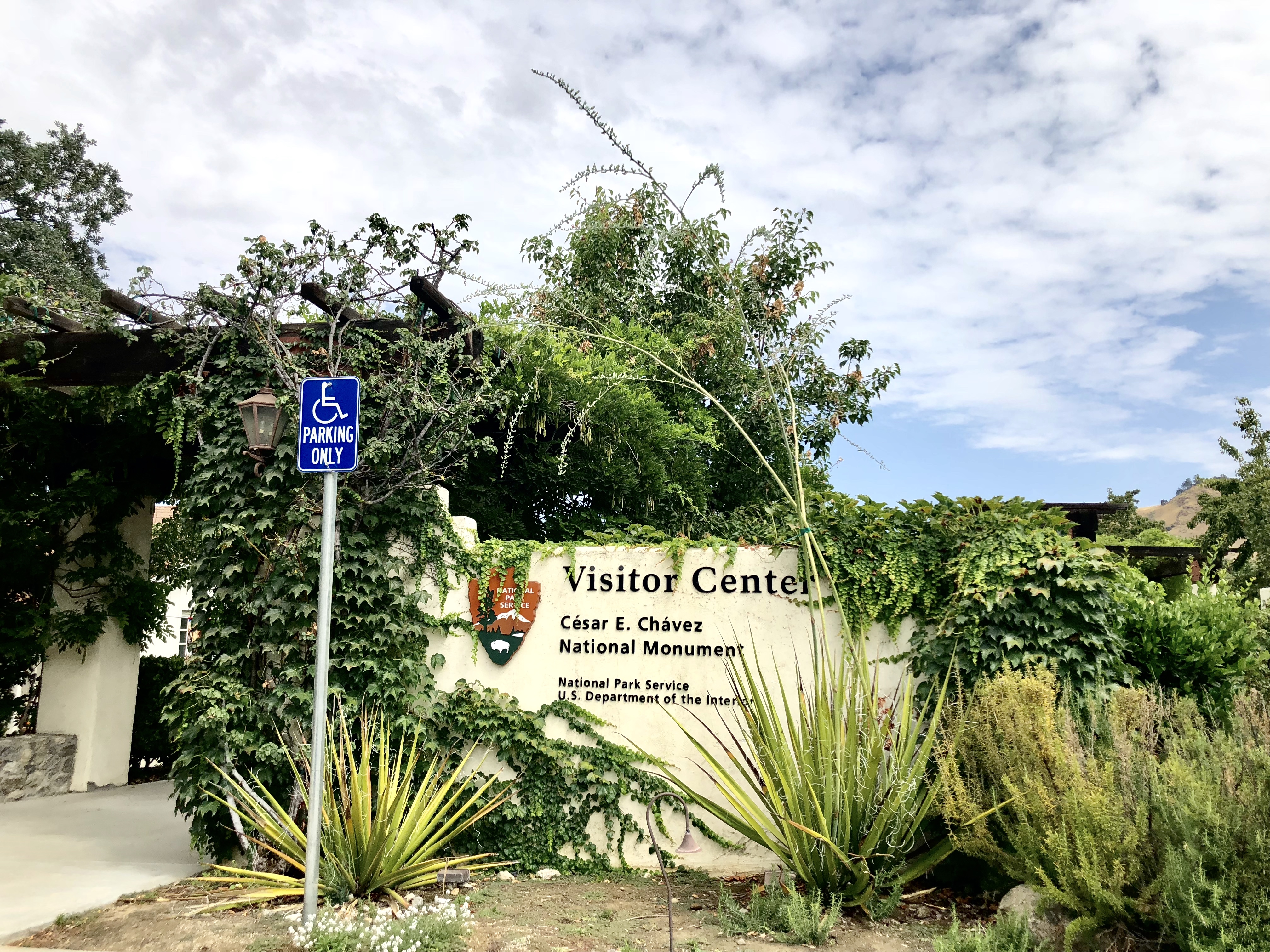Last week, I took a road trip to Yosemite, a place I had never been to: It was somewhere new, unknown, and on my bucket list.
From the scenery, to its culture and its history, California is wonderland in that it is rich in nature and history. And having lived in its neighboring state of Nevada my whole life, it was an adventure long overdue.
I drove from Las Vegas to Yosemite, making a few stops in between. I stayed only two days, then drove back in one. As I began my trip in the wee hours of the morning, I meandered my way through the dessert and high mountains that separate Nevada from California. Passing through Barstow then Bakersfield, and finally reaching the Central Valley.
If you’ve ever gone on a road trip, you know the journey is just as important as the destination. Because I knew I would be driving through the Central Valley, a huge agricultural area, I and my BFF/canine companion, Stinky (who really doesn’t stink), made sure to be on the lookout for signs pointing to mouth-watering fruit stands, which I’m happy to report, we found plenty of.
As we drove, I nibbling on a pint of cherries and a bag of chocolate covered almonds, and my usual radio stations having long ago stopped working, I began to scan the radio in search of music fitting of my travels.
The sounds that greeted my ears made me smile for they were familiar. I thought to myself, “How California.” You see, I had stumbled across 92.5 FM, a Regional Mexican music station that I later learned was owned by the United Farm Workers (UFW). This was the music of my childhood, the music my grandparents used to listen to.
My grandfather Pedro Ortiz instantly came to mind, and I began to wonder if my grandparents had ever driven along this very road themselves, headed to a field in search of work. As migrant farmworkers, they made their living in their earlier years by driving across the country, following the seasons and crops. From the kids, to the cousins, aunts, uncles, parents and the grandparents, everyone worked and traveled as one. This was their life.
Continuing through the area, passing by the rows and rows of fields and orchards, I began to picture what it must have been like for them. The stories my mother Esther used to tell were always of fun and exciting times in the fields, but I had heard of another side to the work, too. That life wasn’t easy: it was backbreaking and I’m sure financially difficult. Despite this, picturing them all together, traveling down this road in their vintage cars, while talking and laughing and listening to music on the radio, made me happy.
Unbeknownst to me, on this morning, I had missed an important sign along the road announcing a monument I would not want to skip. So busy trying to spot fruit stands, it wasn’t until a few days later, when I was traveling back through the area on my way home, that I saw the sign announcing the César E. Chávez National Monument.
Excited, I quickly pulled off the interstate at Keene, and drove down a small windy road some distance before I got to the site.
Until a week ago, I didn’t even know the monument existed. It wasn’t until my aunts had told me about their visit to the monument one week prior, that I decided it was a place I’d like to see, as well. I decided it was fate that a week later, while wandering California on my own adventure, by happenstance, I’d stumble upon the historical sight and get the opportunity to visit the monument that honored the American Civil Rights leader César Chávez, who like my family, had his humble beginning in the fields, working alongside and fighting for farmworker rights.
If you don’t know who César Chávez was, he was a Mexican-American activist who is widely recognized as one of the most important Latino leaders in the United States during the twentieth century. With the help of Dolores Huerta and many others, he led farm workers in creating the first permanent agricultural union of its kind, securing higher wages and safer working conditions for farm workers (like my family).
During the 1970s, the UFW expanded from its early roots as a union for farm workers, to also become a national voice for the poor and disenfranchised, including immigrants who today make up the majority of farmworkers in the U.S.
Pulling into the parking lot, you’ll first notice an inviting garden to the right, and a visitor center to the left. Wanting to learn more about the site before I explored, I decided to stop inside. I was greeted by a Latina park ranger who explained what this site was and its significance.
 In 2012, President Obama signed a presidential proclamation creating the César E. Chávez National Monument, to mark the extraordinary achievements and contributions made by César Chávez and the farm worker movement to the United States.
In 2012, President Obama signed a presidential proclamation creating the César E. Chávez National Monument, to mark the extraordinary achievements and contributions made by César Chávez and the farm worker movement to the United States.
The monument is part of a larger site (also a historical landmark) called Nuestra Señora Reina de La Paz A.K.A. “La Paz”. It became the national headquarters of the UFW and the home and workplace for Chávez, his family, union members, and supporters. La Paz was at the forefront of the American farm worker movement. Thousands of farmworkers and their supporters streamed through La Paz to meet with movement leaders, learn, plan and train from the early 1970’s until Chávez’s’ death. Chávez is buried onsite, visitors can pay their respects at his grave site in the memorial garden adjacent to the visitor center.
Most exciting are the memorabilia, photographs, informational exhibits, and César E. Chávez’s actual office, which can be found past the visitor center information desk.
What stuck out to me the most, was the sense of belonging I felt, as I made my way through the museum, a feeling I’ve yet to feel while visiting other U.S. monuments. This was MY HISTORY, from the people pictured in the photographs that looked like me, to the music that played across the room in a language that was familiar to me, reminded me of home. This museum was meant to celebrate an honor a distinguished man but to me it meant so much more. It represented my family’s life and legacy, a legacy that is so often overlooked and forgotten in our country’s history.
Till this moment, I had never truly understood the importance of seeing your own story. I have always supported the call for Latino-American studies in schools and the revising our history books to highlight the contributions and experiences of people of color, but it never occurred to me that we also need more museums and monuments like this one that curate, honor and celebrate the history and contributions of all Americans, including Latinos.
If we don’t write, share and promote our own history than who will?
So if you are ever in the area, please stop. Let’s show the National Parks that we appreciate and want more sites like the César Chávez National Monument. Let’s support the Chávez foundation and promise to remember César E. Chávez who did so much good for our community and this country.
If you are interested in doing more to preserve and recognize the Latino American experience, be sure to lend your efforts, voice, and monetary contributions to advocating for the creation of the National Museum of the Latino American at the Smithsonian. To learn more visit: American Latino Museum
Update: I’d like to share that two years after writing this blog I learned through a DNA ancestry test that I’m Cesar Chavez’s distant cousin on my father’s side. Looking back on this trip now, I can’t help but understand why I felt such a connection to the national monument and Cesar Chavez.















Leave a Reply